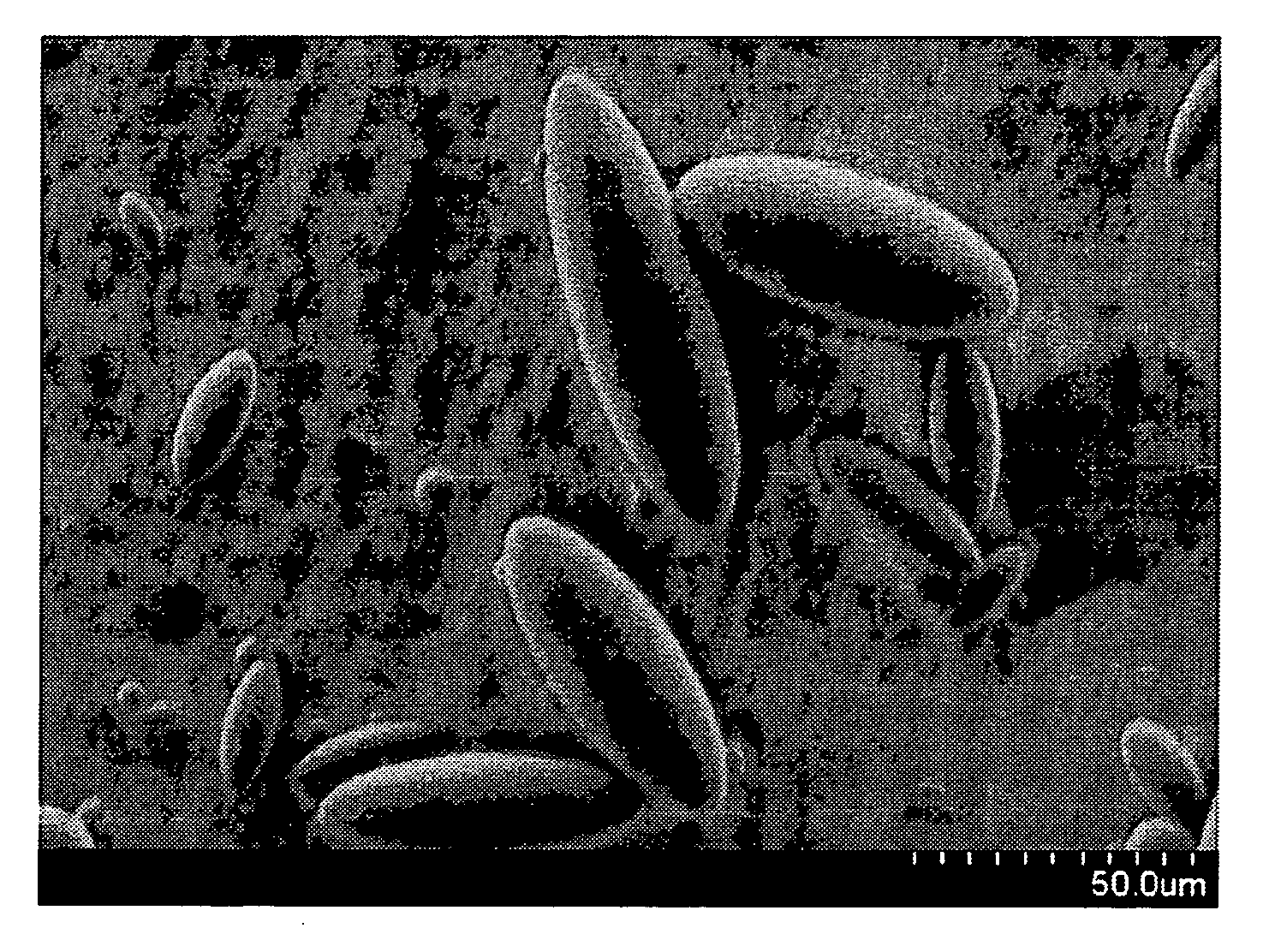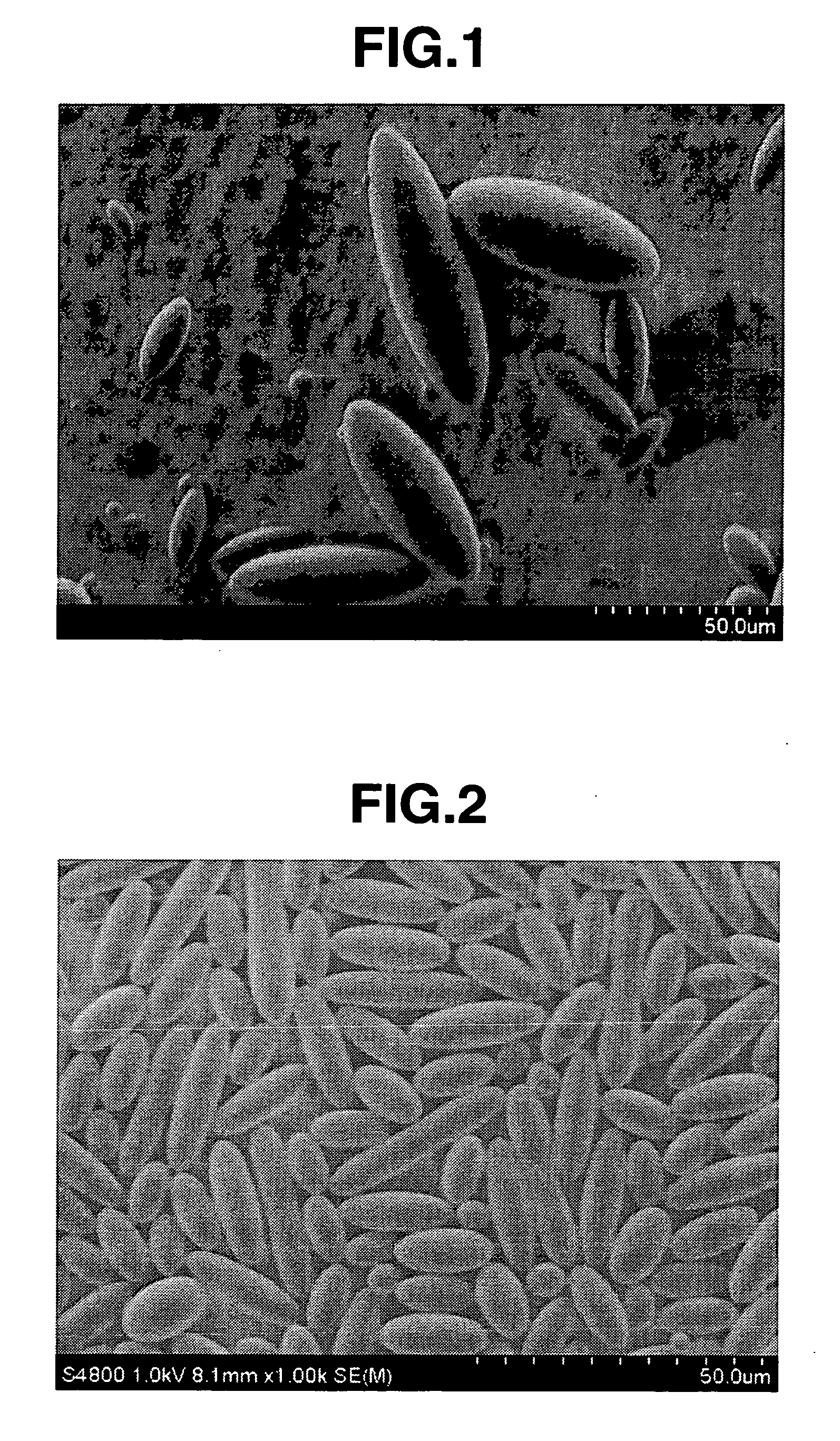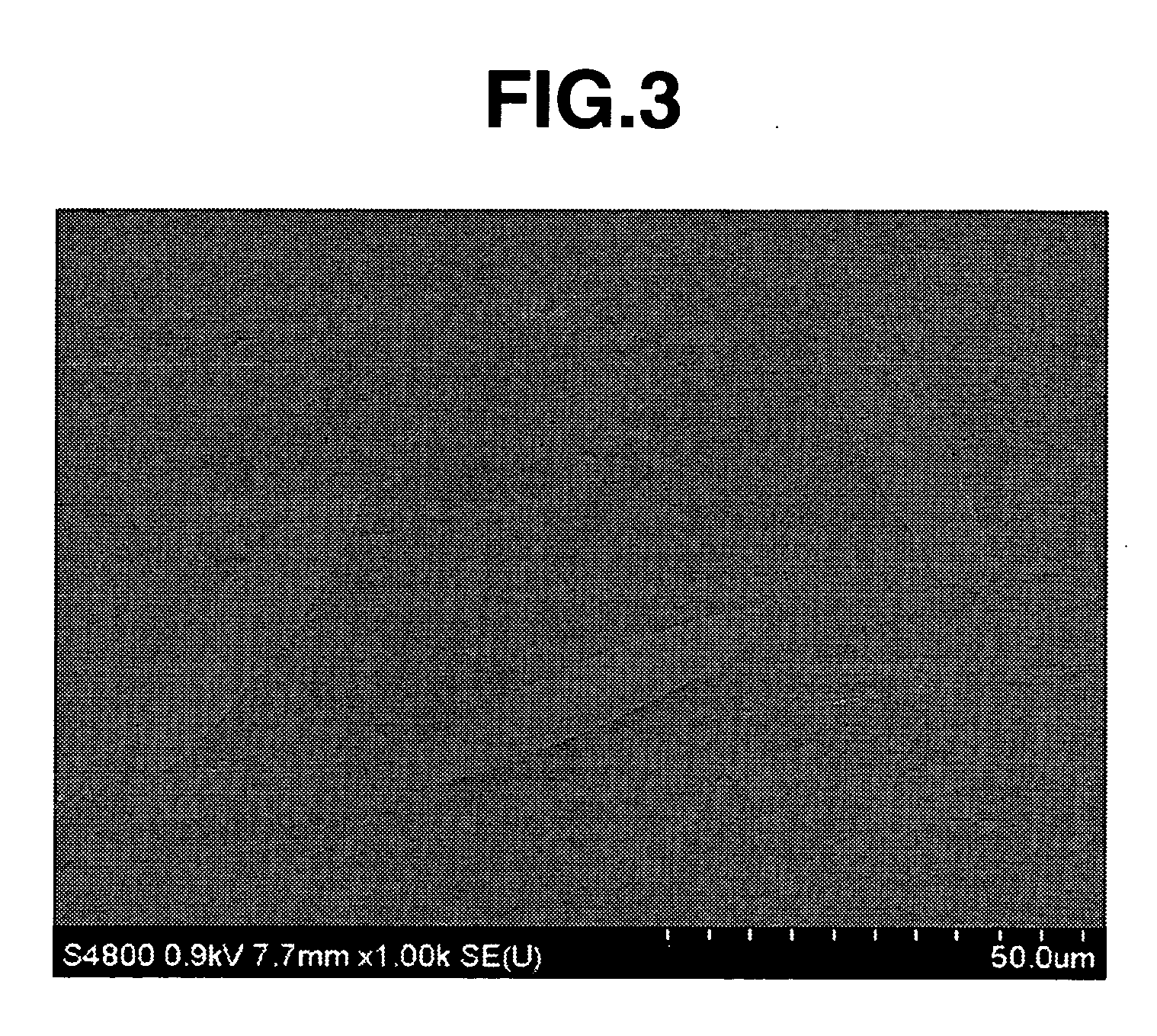Oval-spherical organic polymer particles and method of production
- Summary
- Abstract
- Description
- Claims
- Application Information
AI Technical Summary
Benefits of technology
Problems solved by technology
Method used
Image
Examples
example 1
[0125] The compounds shown below were mixed in the indicated proportions and the resulting mixture was added all at once to a 300 ml flask. Dissolved oxygen in the mixture was displaced with nitrogen, following which the flask contents were heated at an oil bath temperature of 65° C. for about 15 hours under stirring and a stream of nitrogen to give a styrene-sodium p-styrenesulfonate copolymer particle solution.
Styrene28.9 gSodium p-styrenesulfonate 7.2 gMethanol82.8 gWater55.2 gAzobisisobutyronitrile (AIBN) 1.0 gPolyvinyl pyrrolidone (K-30)15.0 g
[0126] Next, this particle solution was repeatedly washed and filtered three to five times with a water-methanol solvent mixture (weight ratio, 3:7) using a known suction filtration apparatus, then vacuum dried, yielding oval-spherical organic polymer particles.
[0127] One hundred of the resulting particles were randomly sampled and their shapes examined under the above-mentioned scanning electron microscope, from which they were confirm...
example 2
[0128] Aside from using sodium methacryloyloxyethylsulfonate instead of sodium p-styrenesulfonate and using polyvinylpyrrolidone (K-90) instead of polyvinyl pyrrolidone (K-30), a styrene-sodium methacryloyloxyethylsulfonate copolymer particle solution was obtained in the same way as in Example 1.
[0129] The particle solution was washed, filtered and dried in the same way as in Example 1. One hundred of the resulting particles were then randomly sampled and their shapes examined under the scanning electron microscope, from which they were confirmed to be oval-spherical organic polymer particles having a major axis L1 with an average length L1a of 74 μm and having a single continuous curved surface. The aspect ratio P1 had an average value P1a of 2.3 and a degree of variation A of 14.7. The average index of spheroidization Q1a was 0.96, and the melting point was 131° C.
example 3
[0130] The compounds shown below were mixed in the indicated proportions and the resulting mixture was added all at once to a 300 ml flask. Dissolved oxygen in the mixture was displaced with nitrogen, following which the flask contents were heated at an oil bath temperature of 75° C. for about 15 hours under stirring and a stream of nitrogen to give a styrene-sodium p-styrenesulfonate copolymer particle solution.
Styrene 30.7 gSodium p-styrenesulfonate 5.42 gMethanol100.7 gWater55.48 gAzobisisobutyronitrile (AIBN) 2.07 gPolymer Stabilizer Solution A23.33 g
[0131] Polymer Stabilizer Solution A is a methacrylic acid-sodium 2-hydroxyethyl methacryloyloxyethylsulfonate copolymer resin solution (resin content, 30 wt %; water-methanol solvent mixture (weight ratio, 3:7); MW=65,000).
[0132] Next, this particle solution was repeatedly washed and filtered three to five times with a water-methanol solvent mixture (weight ratio, 3:7) using a known suction filtration apparatus, then vacuum drie...
PUM
| Property | Measurement | Unit |
|---|---|---|
| Melting point | aaaaa | aaaaa |
| Fraction | aaaaa | aaaaa |
| Fraction | aaaaa | aaaaa |
Abstract
Description
Claims
Application Information
 Login to View More
Login to View More - R&D
- Intellectual Property
- Life Sciences
- Materials
- Tech Scout
- Unparalleled Data Quality
- Higher Quality Content
- 60% Fewer Hallucinations
Browse by: Latest US Patents, China's latest patents, Technical Efficacy Thesaurus, Application Domain, Technology Topic, Popular Technical Reports.
© 2025 PatSnap. All rights reserved.Legal|Privacy policy|Modern Slavery Act Transparency Statement|Sitemap|About US| Contact US: help@patsnap.com



